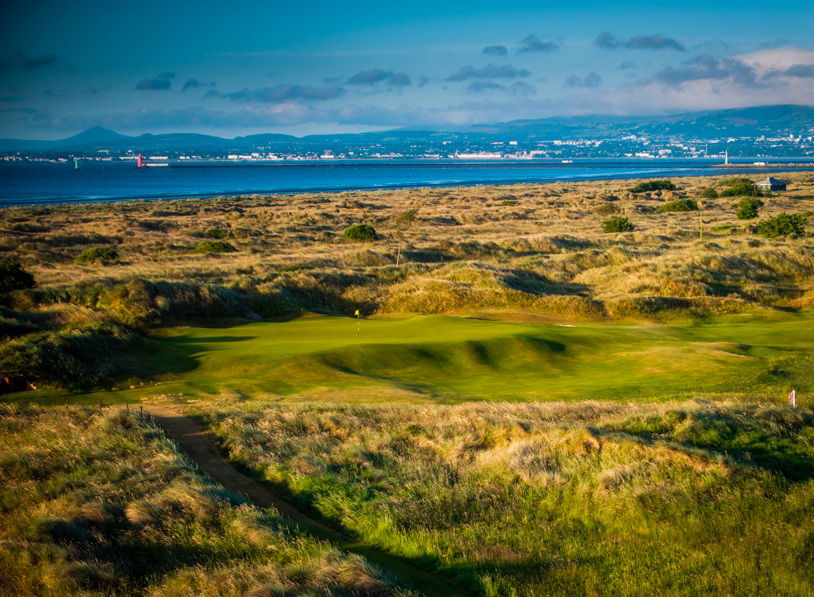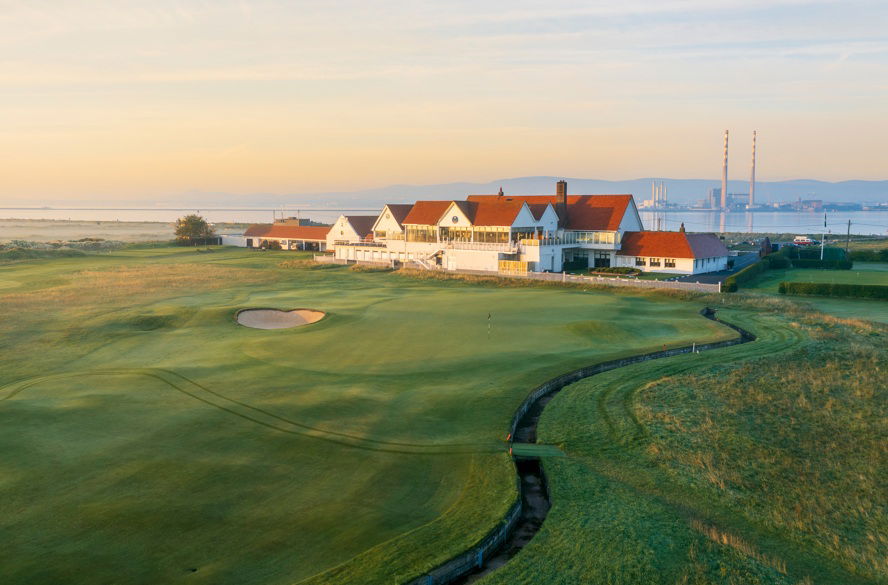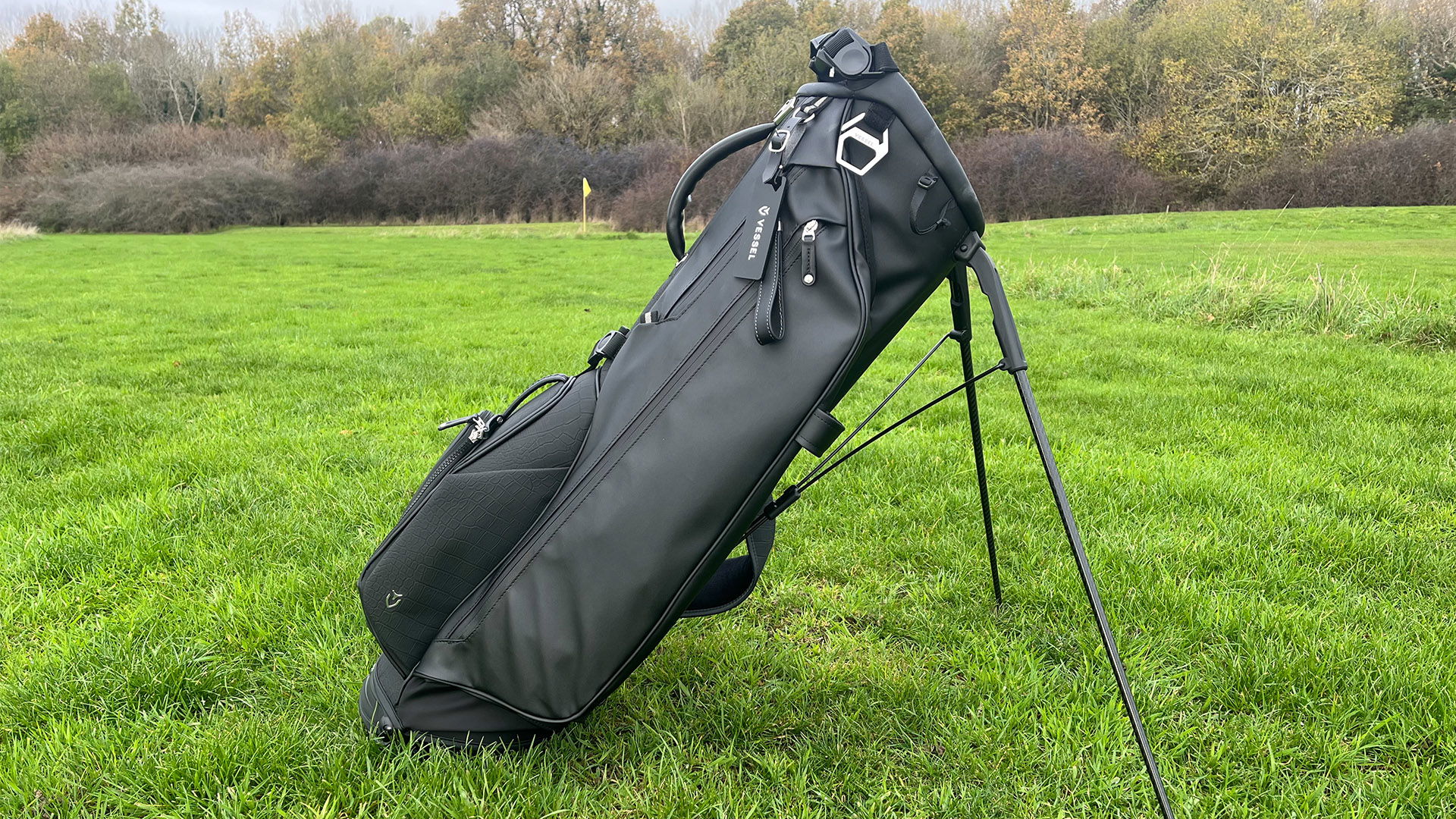Royal Dublin Golf Course Review
GolfMagic reviews Royal Dublin, an historic and beautifully bunkered links layout.

Home to six Irish Opens
Stunning views and landscape
Royal Dublin Golf Course Fact File:
- Location: Royal Dublin is positioned on North Bull Island, just to the east of the city centre
- Year Established: 1885, which makes it Ireland’s third oldest course
- Par: 72
- Length (yards): 7,289
- Green Fees (weekdays): €270
- Signature Hole: Given the history probably the 18th, favourite hole would be the 8th
- Website: theroyaldublingolfclub.com
The first impression of Royal Dublin is a fairly dramatic one given its setting on North Bull Island. The turning takes you a short drive across the water to a nature reserve which is sometimes referred to as Dollymount after the strand on the island, and here sits a course that has been here since 1889, standing proud as one of the best courses in the city.
The club began life for a short while in Phoenix Park when it was called the Dublin Golf Club but then came came the move here and, in 1891, it was given its royal designation.
There have been many famous and iconic visitors (and winners) at Royal Dublin but there was one very special visit when a 73-year-old Old Tom Morris played two exhibition matches here in 1894 and he has been followed by US Presidents, film stars and the greats of the game.
The Irish Open Amateur has visited here a record 29 times – Louis Oosthuizen would win the title in 2002 – and the Irish Open six, the last of which was in 1985 when a very memorable moment took place. At The Masters that year Bernhard Langer had got the better of Seve Ballesteros for the first of his two Green Jackets, but this time around the Spaniard would roll in a 40-footer across Royal Dublin's 18th green before performing what has now become one of his greatest celebrations.
Only Portmarnock has held the Irish Open more times and today it ranks inside Ireland's top-20 courses.
Royal Dublin Golf Course Review
After the damage left by the Great War, when the course and clubhouse was used by the British army for rifle training, Harry Colt was brought in to restore the course and it wasn't until the 2000s that Martin Hawtree was consulted to help the course deal with the modern game as well as raising low-lying green complexes above the water table.
What is initially striking about Royal Dublin is how flat it is. It's an out-and-back links with the front side the shorter of the two nines and the more varied. This will also generally play with the prevailing south-westerly wind which means the back nine, 600 yards longer and with a par of 37, will see you hanging on if you can get it going early on.
The ancient building by the side of the 3rd green, where one member of our party somehow stymied himself from the green, is more famous for where Michael 'Dyke' Moran was born. It is now called Curley's Yard after his grandfather Patrick Curley. Moran would go on to become the club's Professional and tie for third in the 1913 Open behind Harry Vardon at Royal Liverpool.

The 5th is a very strong par 4, and probably the toughest hole on the front nine, while the dog-leg 8th is very easy on the eye. A solitary bunker that protects the left-hand side sets the hole up beautifully before playing an approach to a raised green. This hole wouldn't look out of place on any course and the chances are that your third shot will be played from the run-off to the left.
The pick of the short holes on the front nine, and probably on the course, would be the 4th which is surrounded by sand.
The bunkering here certainly deserves a mention following recent renovation work by Clayton, DeVries & Pont to include mirroring Colt's work here in the 1920s. To summarise it was thought that there were too many bunkers, with 94 previously in place and some of them of the potted variety and therefore hard to escape.
Colt's philosophy was to design severe bunkers for the scratch player and sympathetic for the higher handicapper and it was thought that, over time, the club had moved away from that. So the number of bunkers was heavily reduced and the greens were more asymmetrically defended.
“Bunkers are now better placed to challenge low handicap golfers who seek birdies. Some have said that it feels like there are more even though we took plenty out! At the same time, the course has undoubtedly become more forgiving for the average golfer,” explains Frank Pont.
The back nine will require your driver to operate properly into the wind and there is ample opportunity to short-wide yourself with more clever bunkering and subtle angles. Visually the surrounds aren't overly stimulating but what lies ahead of you – and everything is in front of you at Royal Dublin – should take up enough of your time.

Final Verdict
The closing three holes begins with a plaque to the club's favourite son, Christy O'Connor. 'Himself', as he was affectionately known, joined Royal Dublin in 1959 as club professional and his association with the club would last 57 years. In 1966 he closed out the Carrolls Invitational tournament with an eagle-birdie-eagle finish, holing putts of 20, 12 and eight feet, to win by two. Thankfully, for us mere mortals, the closing hole back then was a par 5 in those days.
The 18th, scene to various dramas and that putt by Seve, is a hard one to get right on your first visit ie I made a terrible mess of it from start to finish. What I did work out is that the green and its surrounds are huge, the hard bit was trying to get my ball anywhere near either due to the out-of-bounds 'Garden' that sits in front of the putting surface.
Another aspect that Royal Dublin does spectacularly well is to showcase its past. Every wall and staircase is decorated with incredible photography and nods to the past and a whole room is dedicated to 'Himself' to celebrate quite what he meant to the club. Our host, a member of the club, mentioned that he would occasionally bump into O'Connor out on the course and he would always be asked to hit a shot before receiving a welcome comment and word of advice.
You'll come away from Royal Dublin richer for many experiences but one absolute guarantee is that you will leave here with a new-found admiration for one of only three Irish golfers to be entered into the World Golf Hall of Fame.
Rating: 3 out of 5 stars ⭐️⭐️⭐️
For more information, please visit the club's website here












